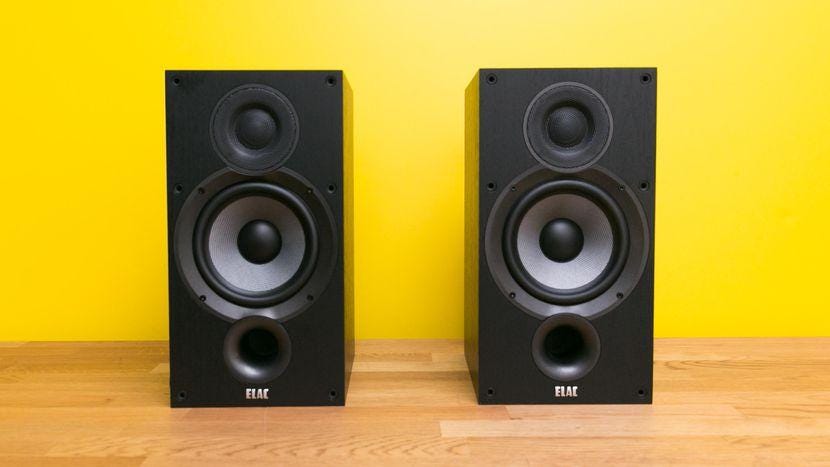
ELAC's Debut B6.2.
Sarah Tew/CNETIf you own a TV, and a sound system to go with it, you may be looking for ways to make it perform at its absolute best. Over time you may have found it doesn't look or sound as good as it used to: the picture isn't as clear, or that dialog has become mumbly. Taking care of these issues is easy, and doesn't need to cost much money -- in fact several of the tips are free.
Here are seven hacks to keep your TV and home theater equipment in tip-top shape, ranging from simply picking up a remote control to buying yourself some new gear.
Calibrate picture and sound settings
Don't worry, you don't need to wear blue coveralls or own a scientific calculator to calibrate your system. It's easy. Whether you just got your TV out of the box or it's been sitting on your TV stand for years you can always improve its picture with a couple of quick button presses. The first thing you should check within your TV's picture settings is that it's in Movie mode or even better Calibrated if it's available. Vivid mode may look impressive on the shop floor but that's where this monstrosity should stay -- people look orange and a lot of fine detail is lost. If you have an Apple TV you can now use an iPhone to calibrate the color of a connected television.
Likewise, getting better sound out of your sound system can be improved with a couple of simple tweaks. If you have a soundbar with a separate subwoofer, for example, moving it a couple of inches in any direction could make it sound a lot better. But if you have something a little more involved, like a receiver and speakers, then there's a few more tricks available up your sleeve. Firstly you can always dig out the calibration microphone and run it through its setup process. However, if you've lost the mic you can always do it by hand, using a decibel meter app on your smartphone. I prefer this latter method as I find it gives better results, especially when it comes to setting the level of the subwoofer.
Keep it clean
Home theaters are literal dust magnets with the amount of static electricity flying around -- especially on TVs. Cleaning your system can not only help it look better, but many AV components will work better after a little maintenance: the most obvious being your TV screen.
If the television has grease spots from fingerprints, use a damp but not wet cloth, or for really stubborn stains use a mild solution of soap and water -- you don't need a specialized screen cleaner. Then wipe it dry with a lint-free cloth. If you're especially short on time you could always breathe on the smudges and use the resulting condensation to polish them off.
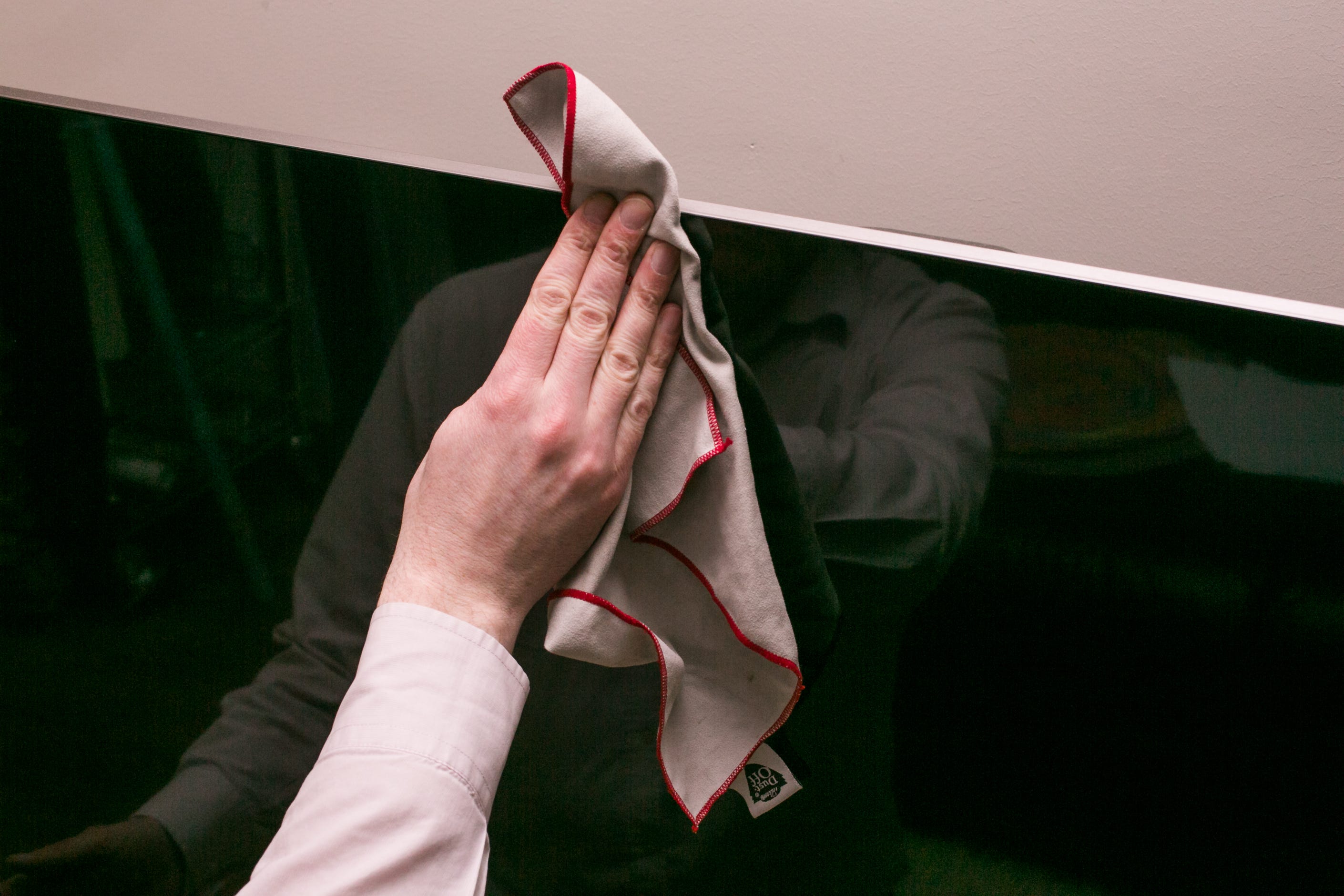
The next step is to remove dust around the TV and any associated equipment like an AV receiver or cable box. While manufacturers do make specialized wipes, a duster or the same lint-free cloth will also work.
If you have devices with cooling fans, these can collect a lot of gunk over time -- cleaning them will help them run better. Buy a can of compressed air to clean these fans efficiently from the outside -- don't open it up -- but make sure to unplug the device first. The "air" can have a lot of moisture in it, and you don't want to risk shorting your equipment.
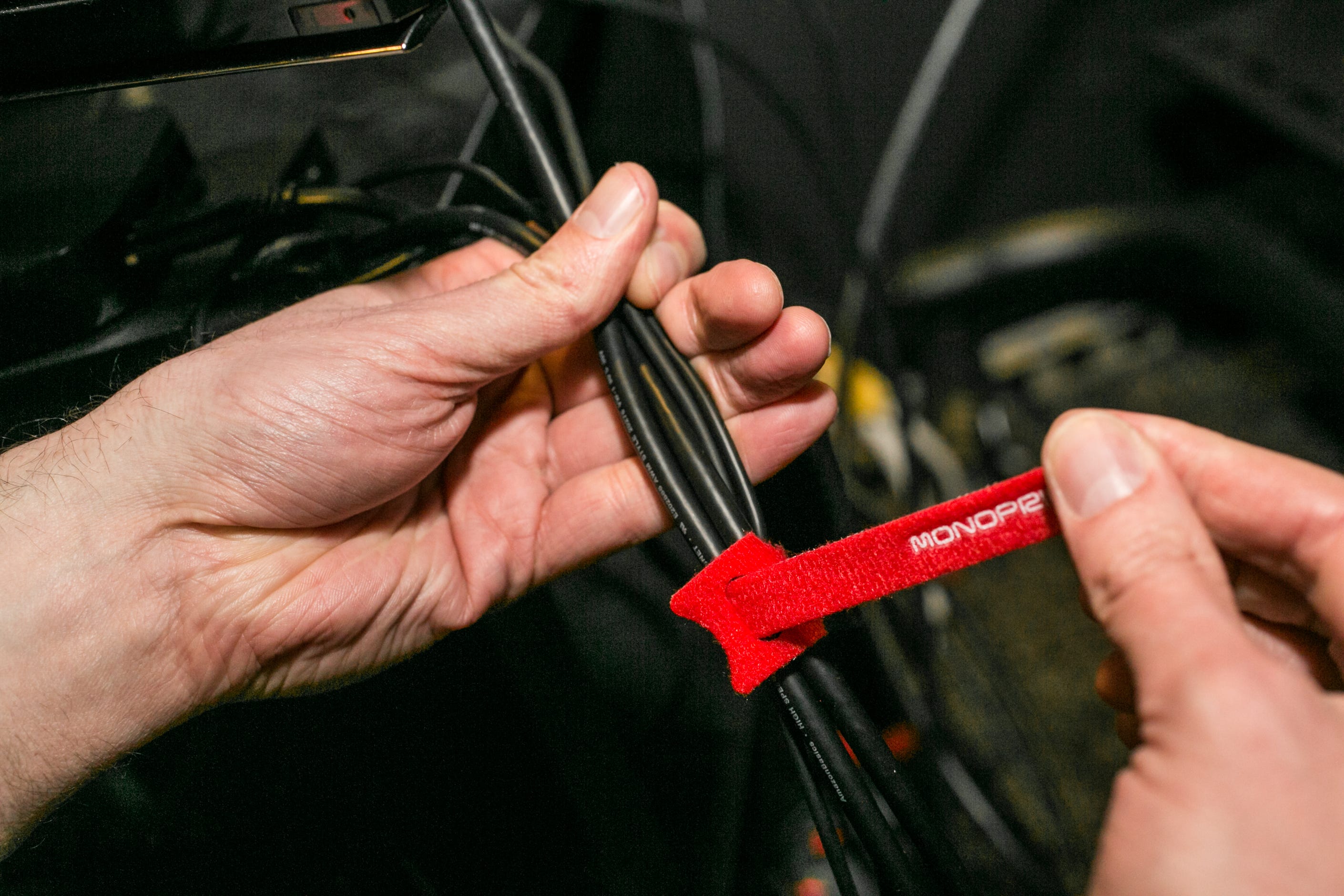
Hide your cables
Cables are the lifeblood of any home theater or TV system, but no one likes looking at them. Hiding them away not only reduces clutter but also prevents potential tripping hazards.
Cable ties are a cost-effective way to organize the cables leading from the TV to other parts of an AV system. But don't buy single-use plastic ties -- instead get Velcro or even wire-based twist ties from bread bags, as these are adjustable.
When running cables together, try to keep AV interconnects and electrical cables separate. That prevents electrical interference, which could result in a degraded audio or video signal. Use the ties to fix the cables along the natural boundaries of AV furniture and walls.
When wall-mounting a TV, you probably don't want a power and HDMI cable dangling down from the bottom. If you don't want to drill holes in your wall, use cable channels that attach to the wall and can be painted to suit your decor. Even better, buy white HDMI and power cables, which will also provide a cleaner look.
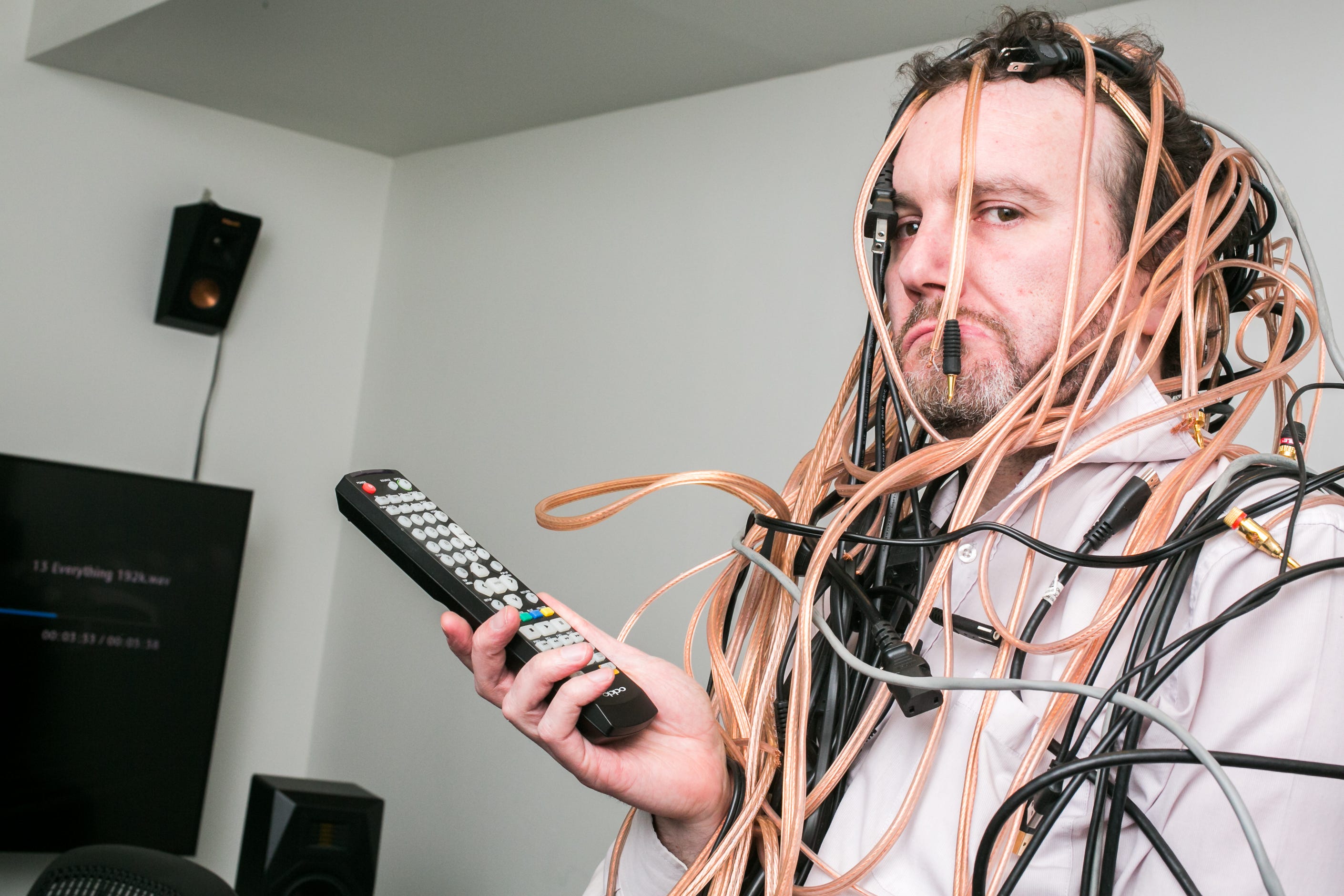
Don't throw the cables on yourself, get them organized.
Sarah Tew/CNETIf the system includes surround speakers or Ethernet, the cables can go under rugs, along skirting boards, or inside specialized rubber duct covers that run across your floor. Mounting clips can be used to fix cables to the wall so they don't wander off. As one reader suggests, don't run power cables underfoot.
Buy a surge protector
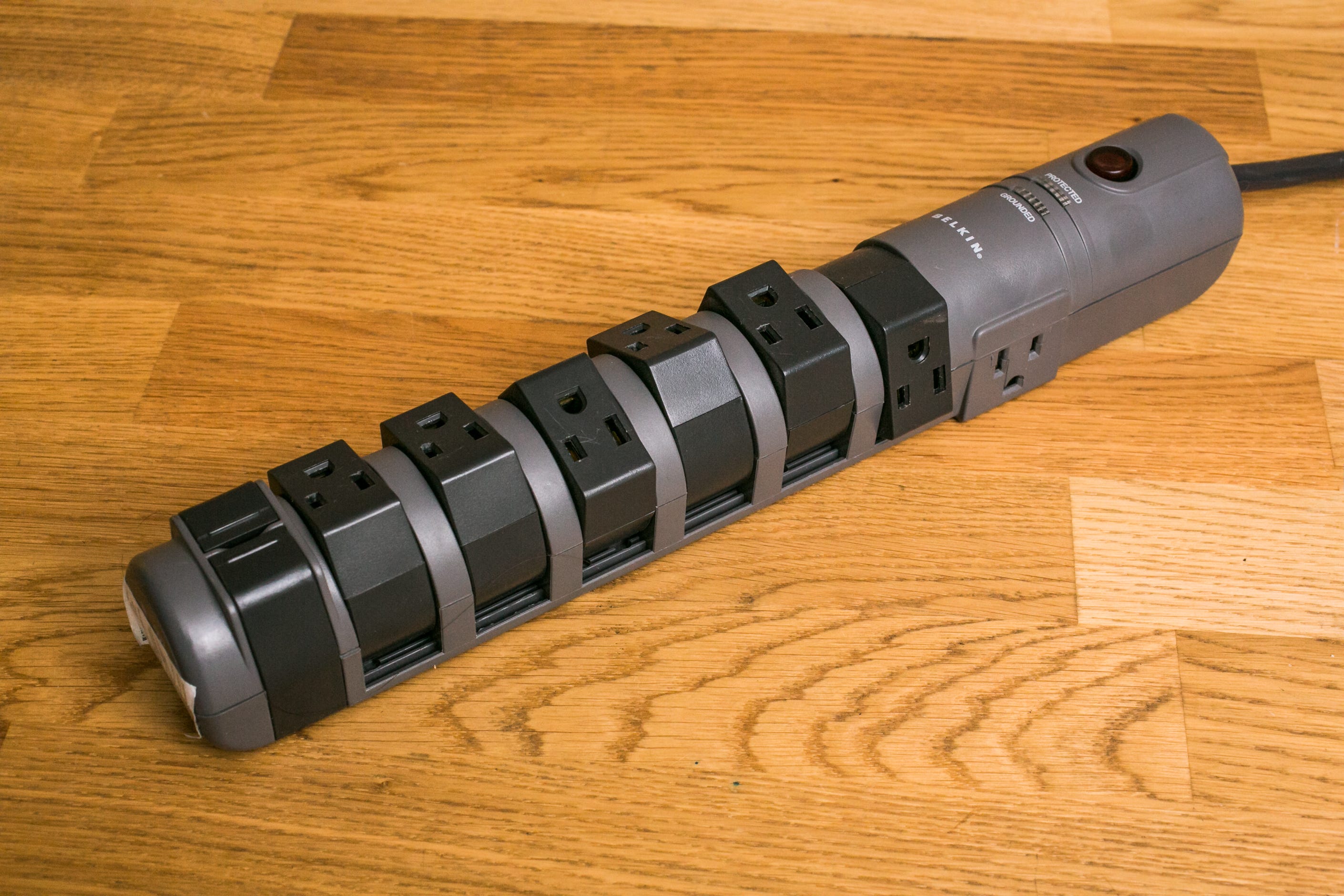
Belkin's 8-Outlet Pivot-Plug Surge Protector.
Sarah Tew/CNETConsider buying a dedicated surge protector that has enough outlets for all of the system's components. While power conditioners can run into the hundreds or thousands of dollars, you don't necessarily need these.
Plenty of highly rated surge protectors are available from about $30. Look for ones with 10 to 12 outlets. The Belkin Pivot-Plug Surge Protector pictured above has "only" eight, but it also offers space for large "wall wart" power packs, which is another key selling point. CNET's Geoff Morrison covers the things to look for when buying a surge protector here.
Be aware that these devices can't really protect equipment from direct lightning strikes: A small wire fuse can do little to hold back the unrelenting power of Mother Nature. For the same reason, don't worry too much about plugging USB, Ethernet or coaxial cables into your surge protector. That said, some models do offer connected devices warranties and may offer some comfort, but one CNET reader found it was like trying to get blood from a stone when they tried to make a claim.
Wall-mount the TV
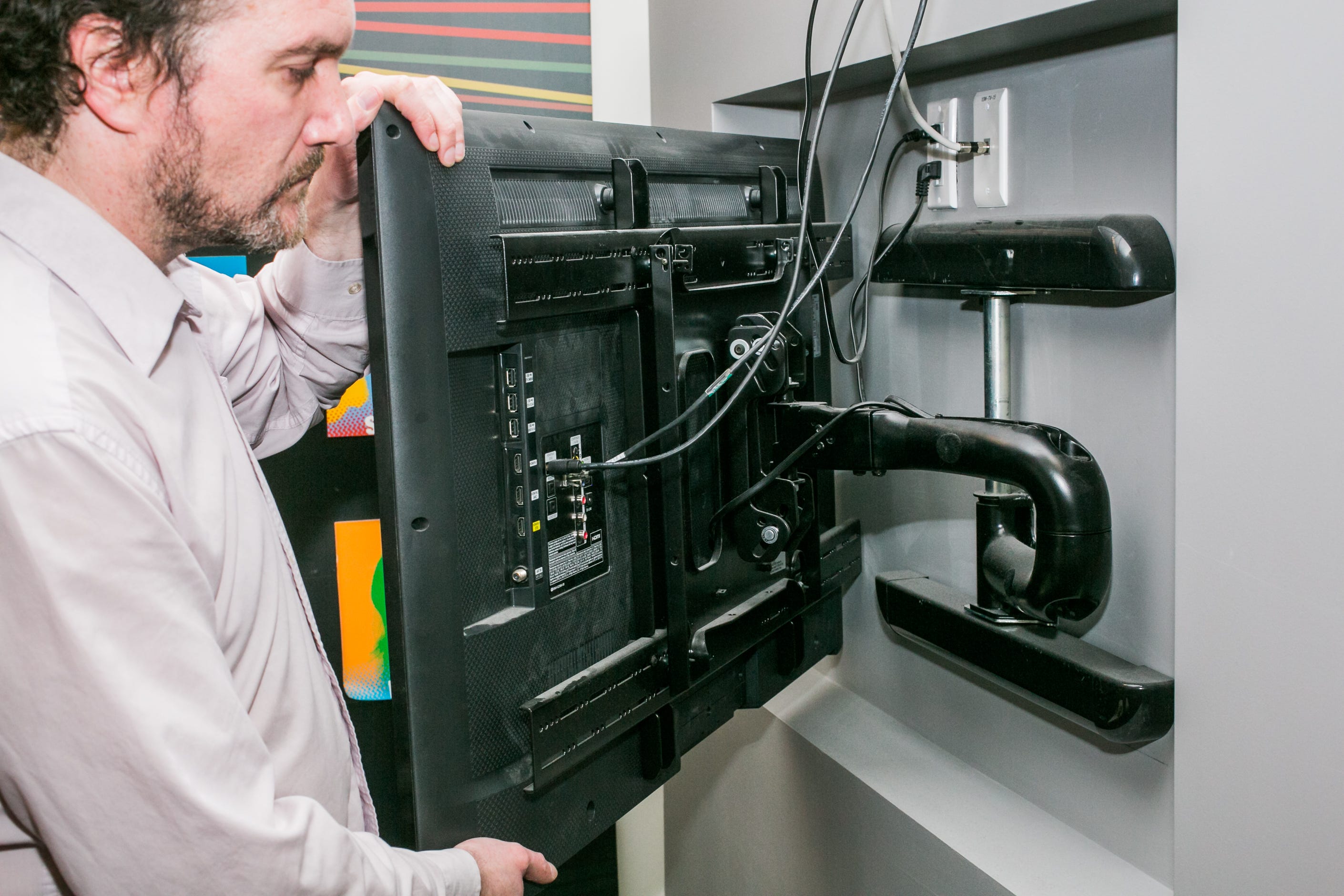
Mounting a TV on the wall is one of the easiest ways to reclaim space in a living room, and not only does it look great, but it's really simple to do. (The harder part is hiding the wires, but that's what the aforementioned cable channels are for.) Here's everything you need to know about mounting a TV. OmniMount is a good starting point when shopping.
Get a new TV stand
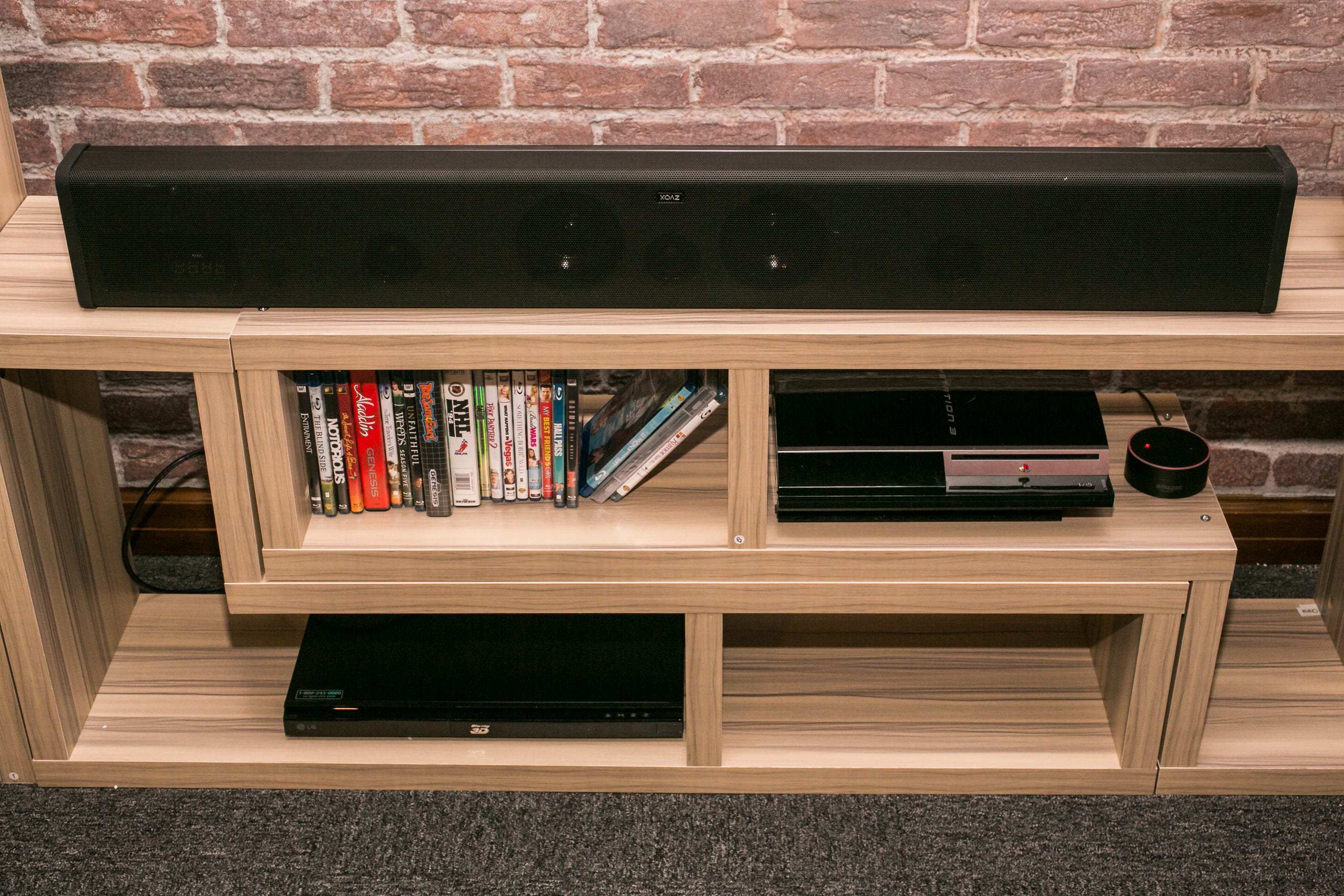
If you're using a table or even the floor(!) to house the TV and associated components, it might be time to invest in a dedicated TV stand. Ikea is usually the default, but also consider products from specialist companies such as Bell'O, Sanus and Salamander. If you're especially passionate about the look, you could enlist a local cabinet-maker to build something custom.
Here's what to look for:
- Plenty of ventilation
- Integrated cable management
- Shelves with line of sight for remote controls without having to leave doors open
- Enough room for all of the cable boxes, consoles and video streamers
Most TV stands are grouped according to the size of your screen, which helps keep things looking neat, but be aware that if you're using discrete speakers, a really wide AV unit might mean the speakers are too far apart for a convincing stereo effect. In this case, you could mount bookshelf speakers on the unit itself and wall mount the TV.
If you have small children, or particularly boisterous friends, it's a good idea to tether the AV cabinet to the wall as well. Some units come with furniture tethering kits, but if not, these kits are available from places like Amazon or Home Depot for very little money.
Buy yourself some new gear
We're all spending more time at home, so why not splurge on improving our TV setup? Whether you're looking to buy a new streamer to take advantage of newer video standards or going all out with a brand new system, the possibilities are endless. Here's a list of all of our favorite AV gear from the tiniest Roku Express to the largest 4K television and everything in between.
This article was originally published in March 2017 and is updated regularly with new tips, tricks and products.
"try" - Google News
May 18, 2021 at 10:30PM
https://ift.tt/3wekFUp
Try these simple TV and home theater tweaks - CNET
"try" - Google News
https://ift.tt/3b52l6K
Shoes Man Tutorial
Pos News Update
Meme Update
Korean Entertainment News
Japan News Update
Bagikan Berita Ini
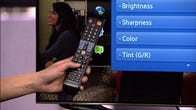
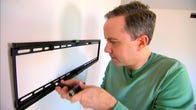














0 Response to "Try these simple TV and home theater tweaks - CNET"
Post a Comment